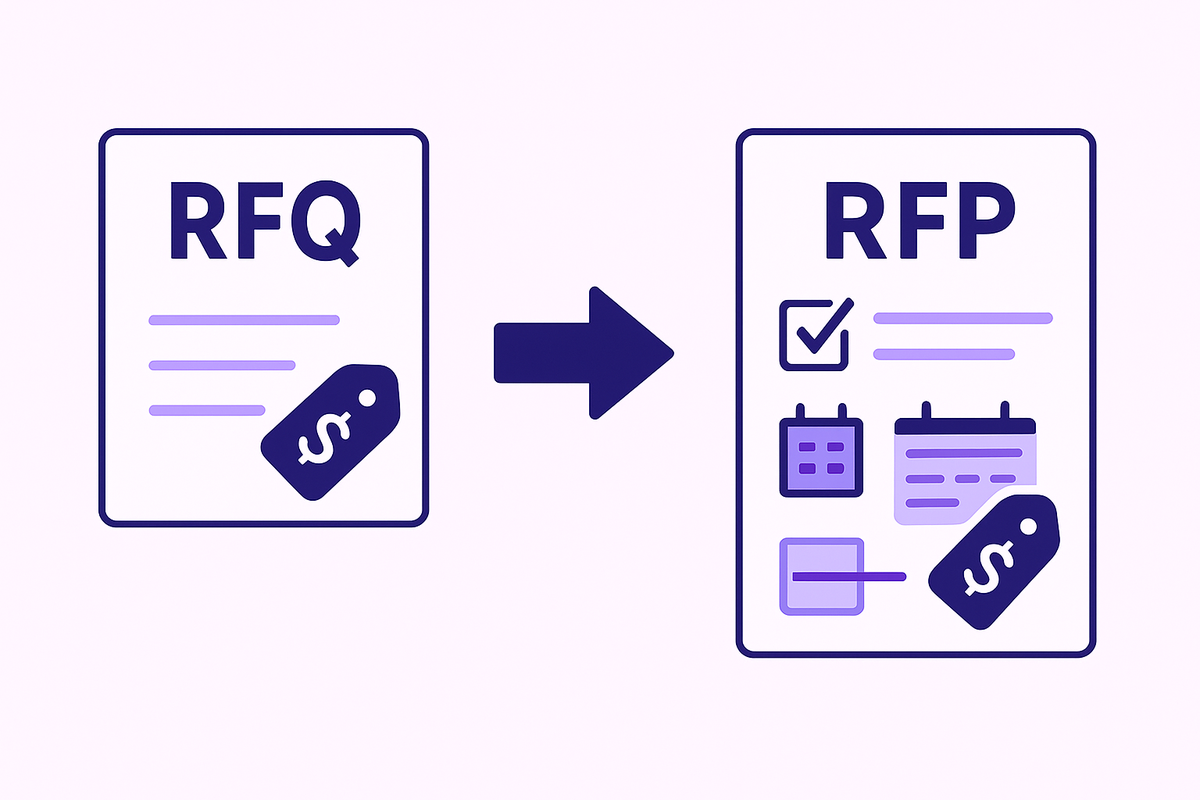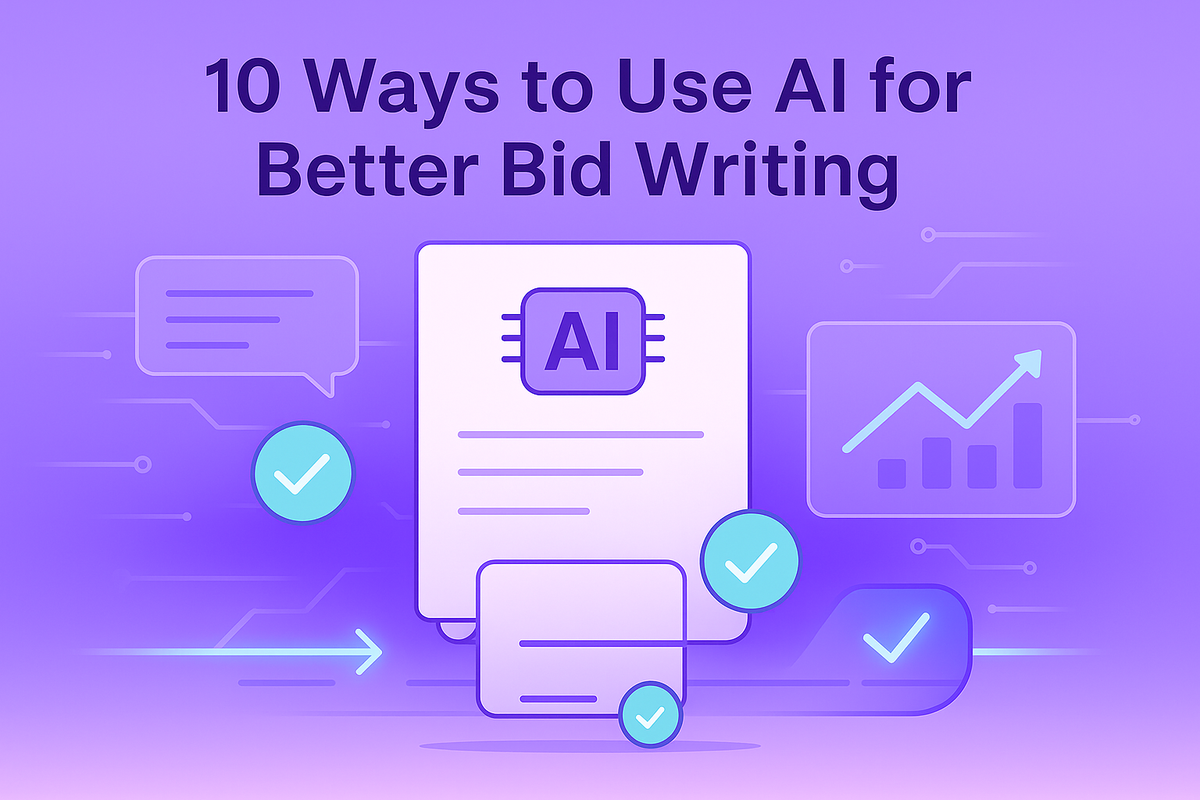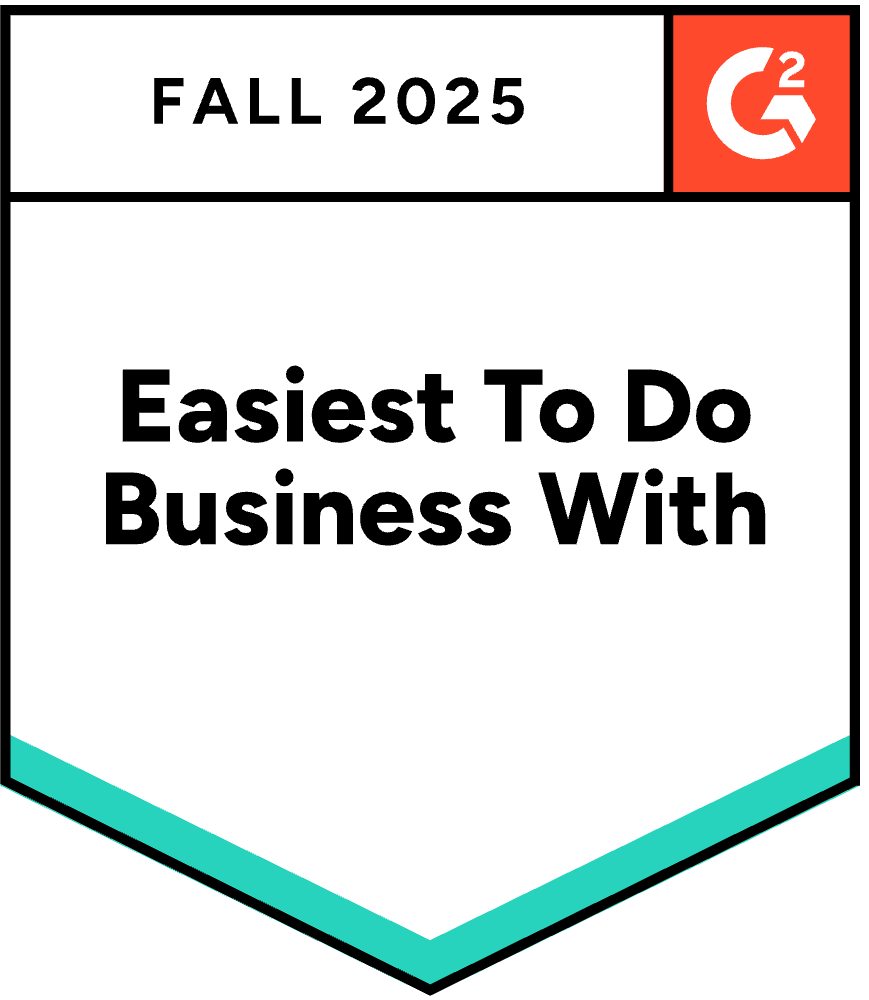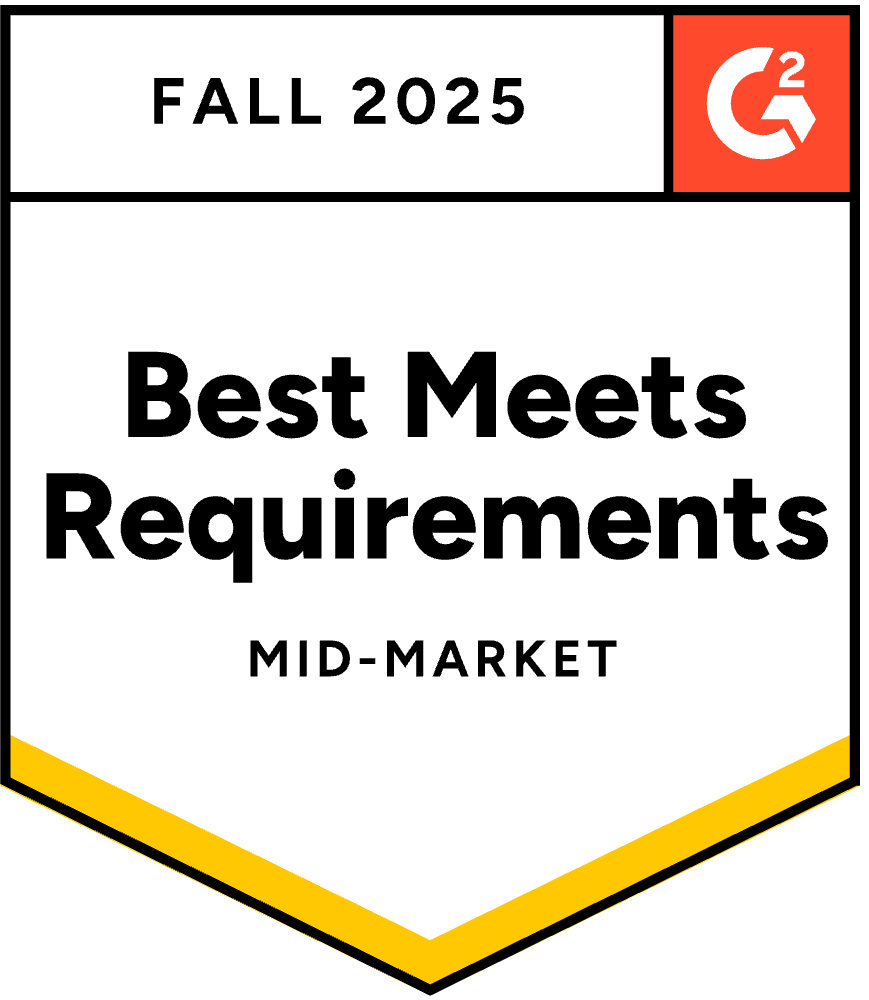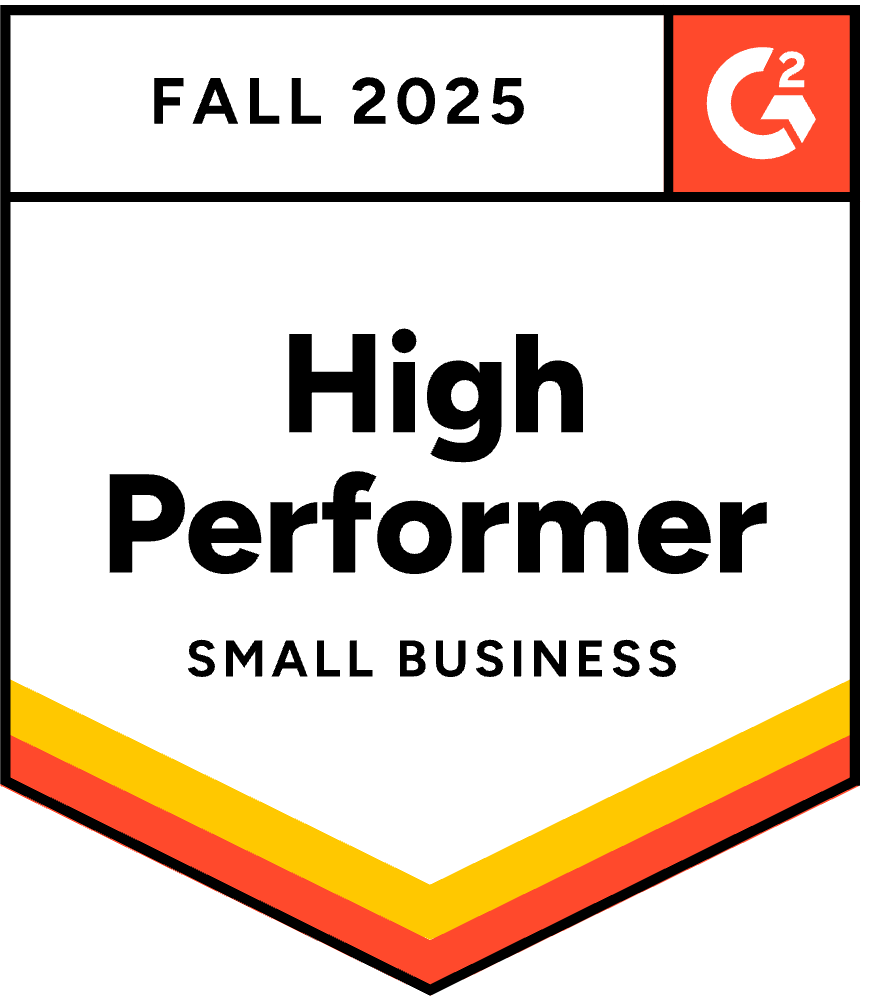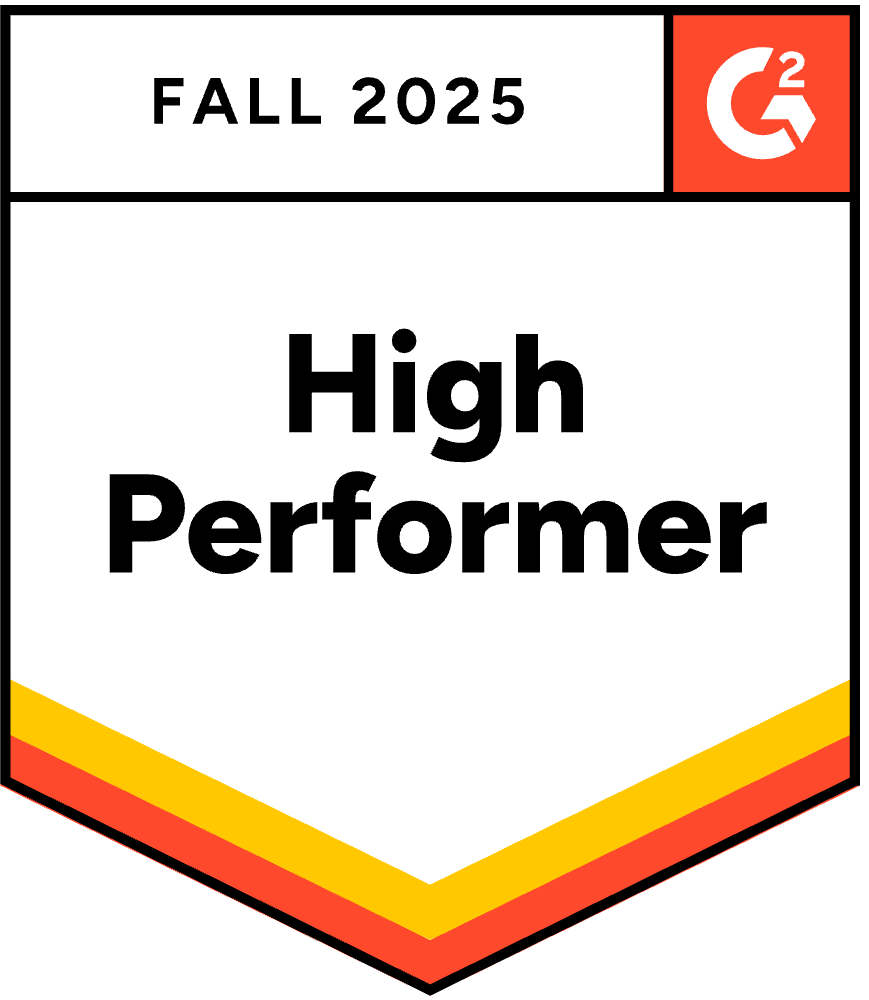6 Best Automated Proposal Creation Tools for Sales
November 13, 2025
By
Evie Secilmis

What if your sales team could respond to more opportunities, create higher-quality proposals, and improve your win rate without working longer hours? This isn't just a hypothetical—it's the reality for teams that have moved beyond manual processes. The secret is turning the proposal stage from a bottleneck into a strategic advantage. Instead of treating proposals as a final administrative hurdle, top-performing teams use technology to make them faster, smarter, and more persuasive. An automated proposal creation tool is the key to making this shift. This guide will break down how these platforms work, why your team needs one, and how to choose the right solution to help you close more deals.
Key Takeaways
- Treat proposal automation as a sales strategy, not just an admin tool: The real value isn't just saving time; it's producing higher-quality, more accurate proposals faster, which allows your team to focus on the strategic work that actually closes deals.
- Prioritize features that connect your entire sales process: Look for a tool with a central content library for brand consistency, deep CRM integration to eliminate manual work, and performance analytics to track how prospects engage with your documents.
- Plan for adoption before you choose a tool: A successful rollout starts with understanding your team's current frustrations. Involve them in the selection process and map out an implementation plan to ensure the software you choose gets used effectively from day one.
What Are Automated Proposal Creation Tools?
Think of automated proposal creation tools as your sales team’s secret weapon. Instead of spending hours (or even days) manually piecing together proposals from old documents, these platforms streamline the entire process. They replace the tedious copy-pasting and frantic searching for the latest case study with an intelligent, centralized system. The goal is to help your team create polished, accurate, and persuasive proposals in a fraction of the time.
At their core, these tools are designed to solve the bottlenecks that slow down your sales cycle. They use automation to pull pre-approved content, populate customer details, and assemble documents based on your specific needs. This means you can generate a first draft in minutes, not days, giving your team more time to focus on what truly matters: building relationships and closing deals. It’s not just about moving faster; it’s about equipping your team to work more effectively and strategically, especially when facing tight deadlines. By handling the administrative heavy lifting, these platforms free up your top performers to concentrate on high-value activities that drive revenue.
How They Improve Your Sales Process
Adopting a proposal automation tool can fundamentally change your sales outcomes. For starters, the impact on your win rate is significant; sales teams using proposal software have seen their win rates increase by as much as 59%. This happens because automation allows you to create higher-quality, more personalized proposals without the extra effort. You can quickly tailor content to each prospect’s unique pain points, showing them you truly understand their needs.
This efficiency is a game-changer when you’re up against a tight deadline. Instead of rushing and risking errors, your team can confidently produce a professional document that stands out. This lets your team prioritize its time on the most strategic activities, like personalizing the executive summary or fine-tuning the pricing strategy, rather than getting bogged down in formatting and content hunting.
The Core Components of Automation
So, what’s under the hood? Most automated proposal tools are built around a few key components that work together to simplify your workflow. The most critical is a central content library, which acts as a single source of truth for all your proposal content. This is where you can store and manage everything from company descriptions and product details to case studies and legal terms, ensuring everyone uses the most up-to-date and approved information.
Beyond the content library, these platforms offer a range of powerful features like customizable templates, built-in eSignatures for faster approvals, and detailed analytics to track how prospects interact with your proposals. Modern tools also leverage AI to make your team even more effective, suggesting relevant content and helping you respond to complex RFPs with greater accuracy and speed.
Why Your Sales Team Needs Proposal Automation
If your sales team is still building proposals manually, you’re likely all too familiar with the bottlenecks. It’s a time-consuming process that pulls your best sellers away from actually selling. The final documents can be inconsistent, and it’s tough to know which proposals are hitting the mark and which are falling flat. Proposal automation software tackles these problems head-on, transforming a tedious administrative task into a strategic part of your sales cycle. It’s about working smarter, not harder, to create winning proposals that close more deals.
Save Time Where It Counts
Think about how much time your team spends hunting for the right content, copying and pasting from old documents, and wrestling with formatting. Automated proposal generation cuts that process down from hours or even days to just a few minutes. Instead of getting stuck on administrative work, your sales reps can focus on closing deals and building client relationships. This efficiency means your team can respond to more opportunities, faster, without sacrificing quality. It gives your top performers their most valuable asset back—time to sell.
Ensure Consistency in Every Proposal
When everyone on the team creates proposals their own way, you risk sending out documents with outdated information, off-brand messaging, or inconsistent formatting. This can damage your company’s professional image. Proposal automation tools solve this by providing a centralized content library and pre-approved templates. This ensures every proposal that goes out is polished, professional, and perfectly aligned with your brand identity. You can be confident that every potential client receives a high-quality, consistent representation of your business.
Improve Win Rates with Smarter Proposals
Ultimately, the goal is to win more business, and this is where automation delivers its biggest impact. It’s not just about speed; it’s about effectiveness. By using a tool that pulls the most accurate and persuasive information for each specific opportunity, your team can create highly targeted proposals that speak directly to a client’s needs. This focus on quality helps teams create more compelling responses. In fact, sales teams that use proposal software can increase win rates significantly, allowing them to prioritize their time on the most strategic and valuable deals.
What to Look For in a Proposal Automation Tool
Once you’re ready to bring a proposal tool into your workflow, the next step is figuring out which one is the right fit. The market is full of options, but not all are created equal. The best platforms share a few key characteristics that directly address the biggest proposal challenges: speed, consistency, and intelligence. A great tool doesn't just spit out documents; it becomes an extension of your sales team, helping them work more efficiently and close deals faster. It should feel less like another piece of software to manage and more like a strategic partner in your sales process.
Think of your search as a checklist. You’re looking for a solution that doesn’t just automate repetitive tasks but makes your entire process smarter and more effective. It should help you maintain brand consistency across every document, give you insights into how clients are interacting with your proposals, and connect with the other tools you rely on. From creating the initial draft to tracking its performance and getting that final signature, the right tool should support your team at every stage. Here are the five non-negotiable features to look for.
Customizable Template Libraries
A strong template library is your starting block for creating professional, on-brand proposals without starting from scratch every time. These aren't just generic layouts; the best tools offer templates you can fully customize to reflect your company’s branding, from logos and color schemes to fonts and formatting. This ensures every document you send looks polished and consistent.
More importantly, templates save a massive amount of time. Instead of your team spending hours on design, they can select a pre-approved template and focus on tailoring the content to the client. This combination of speed and brand consistency means you can respond to opportunities faster while always putting your best foot forward.
Integrations with Your Current Tech Stack
Your proposal software shouldn't live on an island. To be truly effective, it needs to connect seamlessly with the tools your team already uses every day, especially your customer relationship management (CRM) system. Look for platforms that offer robust integrations with software like Salesforce, HubSpot, or your company's own internal systems.
This connectivity eliminates the need for manual data entry and reduces the risk of errors. Your reps can pull client information directly into a proposal and sync proposal status back to the CRM, creating a single, unified workflow. This keeps everyone on the same page and ensures your sales data is always accurate and up-to-date, without forcing your team to constantly switch between different applications.
Streamlined E-signatures and Approvals
The final steps of a deal—getting signatures and internal approvals—can often cause frustrating delays. A top-tier proposal tool removes these bottlenecks by building these functions directly into the platform. Look for software that includes legally binding e-signatures, which allow clients to approve and sign proposals from any device with a single click. This makes it incredibly easy for them to say "yes" the moment they're ready.
For larger teams, internal approval workflows are just as important. The right tool lets you set up automated approval chains, so proposals are automatically routed to the right managers or legal teams before being sent to the client. This maintains quality control without slowing down the sales cycle.
Performance Analytics and Tracking
Are your proposals landing in a black hole? Without analytics, you have no way of knowing. Modern proposal tools provide powerful tracking features that give you clear insight into how clients engage with your documents. You can see exactly when a proposal is opened, which sections are viewed the most, and how long a prospect spends on each page.
This information is invaluable for your sales team. It helps them gauge a prospect's interest level and time their follow-ups for maximum impact. For example, a notification that a client is re-reading the pricing page is the perfect cue for a sales rep to reach out. These sales analytics transform your follow-up process from a guessing game into a data-driven strategy.
Centralized Content and Asset Libraries
Hunting for the latest case study, product description, or team bio is a huge time-waster. A proposal automation tool with a centralized content library solves this problem by creating a single source of truth for your entire team. This feature allows you to store, organize, and manage all your approved sales content in one place.
When building a proposal, your reps can quickly pull in pre-approved content blocks, images, and legal disclaimers, ensuring every document is accurate and up-to-date. An AI deal desk can even take this a step further by proactively identifying outdated information and suggesting the best content for each specific opportunity. This not only speeds up creation but also guarantees consistency and quality across every proposal you send.
The Top Automated Proposal Creation Tools for Sales Teams
Choosing the right proposal automation tool can feel overwhelming with so many options on the market. Each platform comes with its own strengths, whether it’s AI-powered content generation, beautiful design templates, or deep CRM integration. The best choice for your team really depends on your specific needs, your current sales process, and the types of documents you create most often. Are you responding to complex, 100-page RFPs, or are you sending out straightforward sales quotes? Do you need a tool that helps with design, or one that focuses purely on speed and accuracy?
To help you sort through the noise, I’ve put together a list of the top automated proposal creation tools that sales teams are using to close more deals. We’ll look at what makes each one unique, who it’s best for, and how it can fit into your workflow. From AI-driven powerhouses to design-centric platforms, here are the solutions that can help you create winning proposals faster.
HeyIris.ai - AI-Powered RFP and Proposal Management
If your team regularly tackles complex documents like RFPs, RFIs, SOWs, or security questionnaires, HeyIris.ai is built for you. This isn't just a template filler; it's an AI-powered deal desk that learns from your best content to generate accurate, high-quality first drafts in a fraction of the time. Iris connects to your existing systems and proactively flags outdated information, ensuring every proposal is current and correct. The platform’s core strength is its ability to handle dense, information-heavy requests with speed and precision. For sales teams aiming to increase their deal volume and win rates without getting buried in paperwork, Iris provides the intelligent automation needed to stay ahead.
Proposify - Template-Focused Proposal Builder
Proposify is designed to help sales teams create, send, and track proposals with a focus on consistency and efficiency. As its name suggests, the platform excels at managing templates, allowing you to lock down branding, pricing, and content to ensure every document that goes out is professional and on-brand. According to Proposify, its main goal is to streamline the sales process so you can close deals faster. It’s a great fit for teams that need more control over their proposal content and want to move away from messy Word docs and PDFs. With features like content libraries, electronic signatures, and interactive pricing tables, it gives you the structure to create impressive proposals consistently.
PandaDoc - All-in-One Document Automation
PandaDoc is a powerful tool that goes beyond just proposals, offering an all-in-one solution for your entire document workflow. It’s often recommended for businesses that need to manage everything from quotes and contracts to forms and e-signatures in one place. The platform includes a robust content library, CPQ (Configure, Price, Quote) functionality, and detailed analytics to track how clients interact with your documents. If your sales process involves multiple types of documents and you want a single system to handle them all, PandaDoc is a strong contender. Its comprehensive feature set makes it particularly well-suited for larger teams and enterprises looking to standardize their document management from start to finish.
Better Proposals - Design-Centric Proposal Platform
If the visual appeal of your proposals is a top priority, Better Proposals is worth a look. This tool helps you create stunning, modern documents that are sure to impress clients. The platform emphasizes great design and a professional look, aiming to help you stand out from the competition and reinforce your brand identity. As the team at Better Proposals puts it, the goal is to help you "impress clients, improve your brand, and close more deals." With a library of professional templates, online signatures, and payment integrations, it’s an excellent choice for creative agencies, consultants, and any business that wants their proposals to look as good as the work they deliver.
Qwilr - Interactive Web-Based Proposals
Qwilr takes a unique approach by transforming traditional proposals into interactive and mobile-responsive web pages. Instead of sending a static PDF, you can send clients a link to a dynamic, engaging proposal that can include videos, interactive pricing, and embedded analytics. This format not only looks modern but also allows you to gather valuable data on how your prospect engages with the content—what sections they read, how long they spend on each page, and what they click on. For sales teams that want to create a more immersive and memorable client experience, Qwilr’s web-based format offers a clear advantage over traditional documents and helps you stand out in a crowded inbox.
GetAccept - CRM-Integrated Proposal Solution
For sales teams that live and breathe in their CRM, GetAccept offers a deeply integrated solution designed to keep everything in one place. It’s recommended for teams that need a strong connection between their proposal tool and their existing sales software. GetAccept syncs seamlessly with popular CRMs, allowing you to generate, send, and track proposals without ever leaving your primary workspace. The platform also includes features like live chat, video messaging, and e-signatures to help you maintain momentum throughout the sales cycle. According to an analysis of proposal automation tools, its robust integrations make it a top choice for larger teams looking to build a fully connected sales tech stack.
How Do These Tools Compare on Price and Features?
Once you’ve narrowed down your list, it’s time to get into the details of price and features. This isn’t just about finding the cheapest option; it’s about finding the best value for your team’s specific needs. The right tool should feel like an investment that pays for itself through saved time and more closed deals. Let’s break down how to compare your options so you can make a confident choice.
Breaking Down Pricing and Subscriptions
When you start looking at pricing pages, you’ll notice costs can vary widely. Most proposal tools use a subscription model, often charging per user, per month, with tiered plans that add features as the price increases. Don’t just look at the monthly fee. Consider the total cost of ownership, which includes any setup or training costs. It’s also smart to look for a plan that can scale with you. Choosing a tool that supports your growth will save you from a painful migration later. Understanding the different pricing structures will help you find a plan that fits your budget without limiting your potential.
Comparing Features Across Different Tiers
Features are where you’ll see the biggest differences between pricing tiers. A basic plan might give you templates and e-signatures, but the real power often lies in the premium tiers. This is where you’ll find advanced tools like AI-powered content suggestions, deep CRM integrations, and detailed performance analytics. Quality proposal tools help your team create more persuasive responses, and these features are designed to do just that. As you compare specific features, think about your biggest pain points. If your team spends hours searching for content, a tool with a centralized library and AI assistance could be a game-changer. If you need to track engagement, look for robust analytics.
Calculating ROI for Your Team Size
How do you know if a tool is worth the price? By calculating its potential return on investment (ROI). Think about the tangible benefits. First, calculate the time your team will save. If a tool cuts proposal creation time in half, multiply those saved hours by your team’s hourly cost. Next, consider the impact on your win rate. Even a small increase can lead to a significant revenue jump. The goal is to find a tool that blends powerful features with ease of use, helping your team win deals faster. When you see the real-world results other teams are getting, it becomes much easier to justify the investment in a tool that truly supports your sales process.
What Do Users Actually Think?
Marketing materials can promise the world, but what really matters is how these tools perform in the hands of actual sales teams. When you dig into reviews and user feedback for proposal automation software, you start to see clear patterns. People appreciate the efficiency and professionalism these platforms bring to the table, but they also run into some common hurdles during implementation.
Overall, the sentiment is overwhelmingly positive. Sales professionals find that the right tool doesn't just speed up a tedious task; it fundamentally changes how they approach proposals. It frees them up from administrative work to focus on strategy and building client relationships. Let's break down what users are saying—the good, the bad, and how experiences differ depending on the size of the company.
The Most-Praised Features
Across the board, users rave about features that make their lives easier and their proposals more effective. The most valuable proposal creation software tools are praised for blending powerful automation with an intuitive interface. Teams love being able to quickly generate polished, professional documents without needing a graphic designer on standby.
Key features that consistently get high marks include centralized content libraries, which keep messaging consistent, and real-time tracking, which provides insight into when a client opens, views, or signs a proposal. This combination of speed and intelligence helps sales teams build, send, and manage their proposals all in one place, turning a once-dreaded task into a streamlined part of their workflow.
Common Complaints and Frustrations
No tool is perfect, and the biggest challenge with proposal automation often isn't the software itself—it's getting the team to use it. One of the most common hurdles is resistance to change from team members who are set in their ways. Migrating content and learning a new system takes time, and that initial effort can be a point of friction.
Another frustration is the pressure of tight deadlines. While these tools are designed to help, the initial setup can feel like another task on an already-full plate. Teams that are constantly up against the clock may struggle to find the time for proper onboarding and training, which can limit their ability to get the most out of the software from day one.
How Performance Varies by Company Size
Proposal automation tools offer value to businesses of all sizes, from solo entrepreneurs to large enterprises. For smaller companies and startups, the primary benefit is looking polished and professional without a big budget. These tools level the playing field, allowing them to create impressive, on-brand proposals that can compete with those from much larger organizations.
For larger companies, the benefits shift toward consistency, compliance, and scale. A centralized platform ensures that every proposal going out the door meets brand guidelines and contains approved language. It also helps managers track team performance and identify which proposals are most effective, allowing them to prioritize strategic activities and refine their sales process over time.
Which Tool Has the Best User Experience?
A powerful tool is only useful if your team actually enjoys using it. That’s where user experience (UX) comes in. It’s not just about a clean design or flashy features; it’s about how seamlessly the software fits into your team’s daily workflow. A great user experience means your team can create, send, and track proposals without hitting frustrating roadblocks. It means the software feels like a helpful partner, not another complicated system to manage. When evaluating tools, think about the entire journey, from the first time a sales rep logs in to how they collaborate with team members and get help when they're stuck. The right tool should feel intuitive and reduce friction, not add to it. A positive user experience design directly impacts adoption rates and, ultimately, your team's success. If the software is clunky or confusing, even the most advanced features will go unused, and you’ll be right back where you started. We'll look at three key areas that define a tool's user experience: how easy it is to get started, how well it supports modern work styles, and the quality of help you receive when you need it. These factors separate the truly great platforms from the merely functional ones, ensuring your investment pays off in both efficiency and team morale.
Ease of Use and Onboarding
The best proposal tools are intuitive from day one. Your team shouldn't need a computer science degree to build a beautiful, effective proposal. Look for a clean interface, logical navigation, and features that are easy to find and use. A smooth onboarding process is also critical. Does the platform offer guided tours, helpful tutorials, or a dedicated support specialist to get you started? Some tools, like Proposify, are known for being intuitive for any user, which is a huge plus. The goal is to find a solution that simplifies your workflow, allowing your team to focus on the content of the proposal, not on figuring out the software.
Support for Remote and Mobile Teams
Sales doesn't just happen at a desk anymore. Your team is likely spread out, working from home, the office, or on the road. A great proposal tool supports this flexibility. It should offer robust collaboration features that allow multiple team members to work on a proposal simultaneously, no matter where they are. It’s also crucial that the platform is mobile-friendly. Can your reps make quick edits or check a proposal's status from their phone? And just as importantly, can your clients easily view and interact with the proposal on any device? Modern tools are built with this in mind, ensuring a seamless experience for everyone involved and even allowing for real-time client interaction.
Quality of Customer Support and Training
Even the most user-friendly software comes with a learning curve, and questions are bound to pop up. This is where excellent customer support becomes a deal-breaker. When you’re on a tight deadline, you can’t afford to wait 24 hours for an email response. Look for platforms that offer responsive, accessible support through channels like live chat or phone. For example, some providers pride themselves on having a real person answer questions in just a few minutes. Strong ongoing training resources, like webinars and detailed knowledge bases, also show that a company is invested in your success. This level of customer support is what turns a good tool into an indispensable part of your sales process.
What Are the Common Implementation Hurdles?
Switching to an automated proposal tool can completely change your sales process for the better, but let’s be real—adopting any new software isn't always a seamless overnight transition. Knowing what to expect can help you sidestep potential roadblocks and get your team up and running smoothly. Most of the challenges you might face fall into three main categories: getting your team on board, handling the technical setup, and working within the tool's capabilities.
The good news is that these hurdles are completely manageable with a bit of planning. The goal isn't just to buy a new piece of software; it's to integrate a tool that genuinely makes your team's life easier and helps you win more deals. By thinking through these potential challenges ahead of time, you can create a clear plan for implementation, set realistic expectations, and ensure you choose a platform that truly fits your needs. A successful rollout is less about the software itself and more about how you introduce it to your team and your existing workflows.
Navigating Team Adoption and Resistance
One of the biggest hurdles has nothing to do with technology and everything to do with people. Your sales reps have their own routines and ways of doing things. Introducing a new tool can feel like a disruption, and it’s natural to encounter some resistance to change. Team members might worry that a new system will be complicated to learn or slow them down, especially if they’re used to their current process, however inefficient it may be.
The best way to handle this is to involve your team from the start. Get their input on what they need in a tool and let them participate in demos. Frame the new software as a way to eliminate their most tedious tasks—like hunting for the latest case study or reformatting documents—so they can focus on what they do best: selling. A solid change management plan that includes thorough training and highlights personal benefits is key to getting everyone excited.
Overcoming Integration and Content Challenges
For a proposal tool to be effective, it needs to fit neatly into your existing tech stack. If it doesn’t integrate well with your CRM or other essential systems, your team will be stuck toggling between platforms and doing manual data entry, which defeats the whole purpose of automation. Another challenge is the initial effort required to migrate all your existing content—product descriptions, team bios, legal disclaimers, and case studies—into the new platform’s library.
This is where modern, AI-powered solutions really shine. A platform like HeyIris.ai is designed to connect with your systems and act as a single source of truth, making it easier to manage and update information. It helps ensure every proposal goes out with the most current and accurate content, saving your team from the frantic last-minute scramble to find the right information before a deadline.
Understanding Customization Limits
Your proposals are a direct reflection of your brand, so you need a tool that allows for a high degree of customization. A common frustration is discovering that a new tool’s templates are too rigid, making it difficult to create documents that look and feel like your company. You don’t want your carefully crafted proposals to come out looking generic or being forced into a format that doesn’t fit your sales strategy.
Before you commit to a tool, dig deep into its customization capabilities. During the demo, ask to see exactly how you can change layouts, fonts, and colors. Can you easily add custom-branded elements like headers and footers? Can you create unique proposal structures for different types of clients or services? Choosing a tool with the right balance of powerful automation and creative flexibility is essential for producing proposals that are both efficient to create and impressive to receive.
How to Choose the Right Proposal Tool for Your Business
Picking the right software is about more than just comparing feature lists. It’s about finding a tool that fits seamlessly into your team’s workflow and actually helps you win more deals. A thoughtful approach ensures you invest in a solution that solves your real-world problems instead of creating new ones.
Think of this as a three-step process: first, understand where you are now; second, define where you want to go; and third, create a map to get there. By breaking it down, you can confidently choose a tool that your team will not only use but love.
Assess Your Current Proposal Process
Before you can fix a process, you need to understand it inside and out. Map out every step your team takes to create a proposal, from the initial request to the final submission. Where are the bottlenecks? Is it finding the right content, waiting for approvals, or wrestling with formatting? Talk to your team to get their honest feedback on what slows them down and what frustrates them the most.
One of the biggest hurdles to adopting new technology is resistance to change. By identifying the pain points in your current system, you can present a new tool as a solution to those specific problems, making your team more receptive. This isn't just about buying software; it's about improving your team's day-to-day work.
Match Tool Features to Your Team's Needs
Now that you know your challenges, you can look for features that directly address them. If your team wastes hours searching for approved content, a centralized, AI-powered content library is a must-have. If consistency is an issue, look for robust templating features. The goal is to find a tool that helps your team create more persuasive responses without getting bogged down in manual tasks.
Make a list of your "must-have" versus "nice-to-have" features. This will help you cut through the noise and focus on what truly matters. For example, an AI deal desk can automatically populate answers for RFPs and security questionnaires, a critical feature for teams handling complex bids. Selecting the right tool means aligning its capabilities with your team’s specific needs to help them focus on what they do best: selling.
Plan Your Implementation and Adoption Strategy
A great tool is useless if no one uses it. Your final step is to create a clear plan for rolling out the software and getting your team on board. Start by designating a project champion—someone who can lead the charge, manage training, and help migrate your existing content into the new system.
Remember, teams that use proposal software can increase their success rate significantly. Frame the implementation as an investment in their success. Show them how automated proposal generation can reduce the time it takes to create a first draft from days to just minutes. By planning your adoption strategy from the start, you set your team up for a smooth transition and, ultimately, more wins. You can see how other teams have successfully managed this process and the results they achieved.
Related Articles
- 6 Best Sales Proposal Automation Software Tools
- How to Build a Proposal Automatically with AI
- AI for Sales Proposals: Streamline Your Process
Frequently Asked Questions
How much time does it really take to get started with one of these tools? That’s a fair question. The initial setup does require an investment of your time, mostly for migrating your best content into the platform’s library. Think of it as a one-time spring cleaning for your sales materials. Once that’s done, the time savings are immediate and significant. Instead of spending hours or days on a proposal, your team can generate a solid first draft in minutes, which means the upfront effort pays for itself very quickly.
Will using an AI-powered tool make my proposals sound generic or robotic? Not at all. Think of the AI as a brilliant research assistant, not the final writer. Its job is to handle the heavy lifting by pulling the most relevant, accurate, and approved information for your first draft. This frees you and your team up to focus on the most important parts—personalizing the executive summary, fine-tuning the strategy, and adding that human touch that actually closes the deal. The tool provides the foundation, but you still provide the personality.
My team is small. Is proposal automation software still worth it for us? Absolutely. In fact, smaller teams often see some of the biggest benefits. When you have fewer people, everyone’s time is incredibly valuable. These tools allow a small team to operate with the efficiency and professionalism of a much larger one. You can respond to more opportunities, faster, and ensure every proposal you send looks polished and on-brand, which helps you compete effectively and win more business without burning out your team.
What's the single biggest mistake teams make when choosing a proposal tool? The most common misstep is jumping straight into comparing features without first understanding their own process. It’s easy to get distracted by a long list of bells and whistles, but the best tool is the one that solves your team’s specific problems. Before you look at any software, map out your current workflow and identify your biggest bottlenecks. When you know exactly what you need to fix, you can choose a solution that truly helps, not one that just adds another layer of complexity.
Beyond proposals, what other kinds of documents can these tools handle? Many of these platforms are designed to be versatile. While they excel at creating sales proposals, the more advanced solutions can manage a wide range of complex business documents. This includes Requests for Proposals (RFPs), Requests for Information (RFIs), Statements of Work (SOWs), and even detailed security or due diligence questionnaires. The core function of quickly assembling accurate information from a central library applies to any document that requires consistent, pre-approved content.
Share this post
Link copied!



